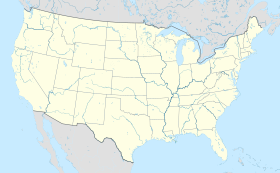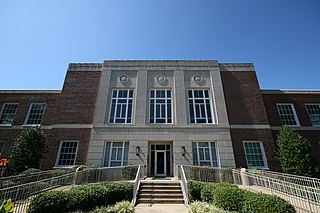
Watkinsville is the largest town and county seat of Oconee County, Georgia, United States. As of the 2020 census, the town had a total population of 2,896. It served as the seat of Clarke County until 1872 when the county seat of that county was moved to Athens, a move which ultimately led to the creation of Oconee County in 1875. It is included in the Athens-Clarke County, Georgia Metropolitan Statistical Area.
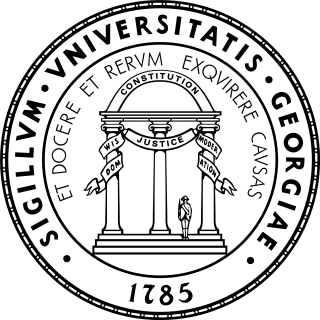
The University of Georgia is a public land-grant research university with its main campus in Athens, Georgia. Chartered in 1785, it is one of the oldest public universities in the United States. It is the flagship school of the University System of Georgia.
The University of Georgia Press or UGA Press is the university press of the University of Georgia, a public land-grant research university with its main campus in Athens, Georgia. It is the oldest and largest publishing house in Georgia and a member of the Association of University Presses.

WGTA is a television station licensed to Toccoa, Georgia, United States, serving much of the northeastern portion of the state. The station is owned by Marquee Broadcasting, and has studios on Big A Road in Toccoa; its transmitter is located northwest of Camp Toccoa in unincorporated Stephens County.
Mary Frances Early is an American educator who was the first African-American to earn a degree from the University of Georgia. Early graduated with a masters degree in music education in 1962, and later received an educational specialist degree in 1967.
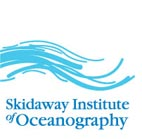
The University of Georgia Skidaway Institute of Oceanography (SkIO) is a marine science research and education institute located on Skidaway Island near Savannah, Georgia, USA. UGA Skidaway Institute faculty conduct oceanographic research across all the major marine science disciplines, and from the waters and marshes adjoining the campus to around the world. They teach, advise and mentor both undergraduate and graduate students on the UGA Skidaway Marine Science Campus and on the university’s main campus in Athens. Institute resources include state-of-the-art research laboratories and instrumentation, and the 92-foot research vessel Savannah.
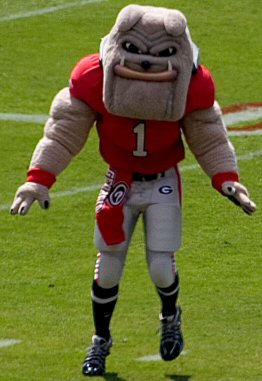
Hairy Dawg is the costumed mascot of the University of Georgia Bulldogs. Hairy Dawg made his first appearance at the 1981 Sugar Bowl and has been an official mascot of UGA since. Hairy Dawg attends all Georgia Bulldogs football games and most home athletic events. Forbes ranks Hairy Dawg No. 3 in their list of "America's Top 10 Sports Mascots".
The Odum School of Ecology is a school within the University of Georgia and the successor of the UGA Institute of Ecology. It is named after Eugene Odum, renowned UGA biologist, the father of ecosystem ecology, and the founder of the Institute.
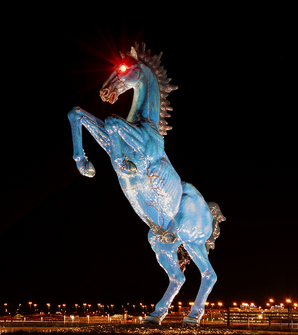
Blue Mustang is a cast-fiberglass sculpture of a mustang located at Denver International Airport (DEN). Colored bright blue, with illuminated glowing red eyes, it is notable both for its striking appearance and for having killed its sculptor, Luis Jiménez, when a section of it fell on him at his studio.

Jackson Street Cemetery, also known as Old Athens Cemetery, was the original cemetery for Athens, Georgia and is listed on the National Register of Historic Places. It was in official use as the town cemetery from about 1810 to 1856, until Oconee Hill Cemetery opened. The last known burial was in 1898.
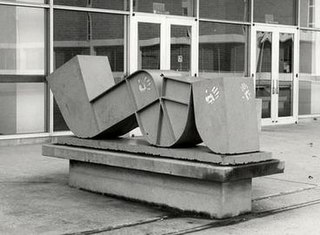
Broken Walrus I, a public sculpture by American sculptor Gary Freeman, was installed on the Indiana University-Purdue University Indianapolis campus, near downtown Indianapolis, Indiana, in 1975. Located north of the IUPUI Lecture Hall, the sculpture was removed around 2004 after it rusted. The work was fabricated in mild steel, painted an orange-red matte finish, and measured 36-inch (91 cm) tall by 8-foot (2.4 m) long by 24-inch (61 cm) wide.

Abbott Lawrence Pattison was an American sculptor and abstract artist.
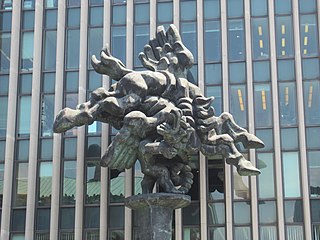
Bellerophon Taming Pegasus is an outdoor sculpture by Jacques Lipchitz, depicting Bellerophon and Pegasus. It was the final sculpture worked on by Lipchitz, and was completed after his death in 1973.
Wayne Allen Parrott is a professor of crop sciences in the University of Georgia's College of Agricultural and Environmental Sciences in Athens. Since 2017, he has also been an Elected Fellow of the American Association for the Advancement of Science.
Toby Jackson is an American football defensive end for the Massachusetts Pirates of the National Arena League (NAL). He played college football at the University of Central Florida.

William Jacob Fromm is an American football quarterback for the Washington Commanders of the National Football League (NFL). He played college football at Georgia and was drafted by the Buffalo Bills in the fifth round of the 2020 NFL Draft. He started two games with the New York Giants in 2021.
Albert L. Hester was a professor of journalism at the University of Georgia (UGA), a columnist, historian, newspaper reporter, and author. He wrote more than ten books including Gospel Pilgrim Cemetery: An African-American Historical Site about the Gospel Pilgrim Cemetery for African Americans in Athens, Georgia, and Enduring Legacy: Clarke County, Georgia's Ex-Slave Legislators Madison Davis and Alfred Richardson about Madison Davis and Alfred Richardson. He wrote Athens, Georgia, Celebrating Two Hundred Years at the Millenium with his wife Conoly Hester, who is also a writer and editor. He also authored some 200 articles.

Freedom University is a modern-day Freedom School in Atlanta, Georgia. Freedom U provides tuition-free college classes to undocumented youth unable to access higher education in Georgia due to the state's out-of-state tuition requirement. The school formed in 2011 in response to the University System of Georgia's passage of a policy banning undocumented students from the state's top public universities.

The Confederate Obelisk is a large Confederate monument located in the Oakland Cemetery of Atlanta, Georgia, United States. The structure, a tall obelisk located in the cemetery's Confederate section, was dedicated in 1874. Due to its connection to the Confederate States of America, the monument has been vandalized repeatedly.


